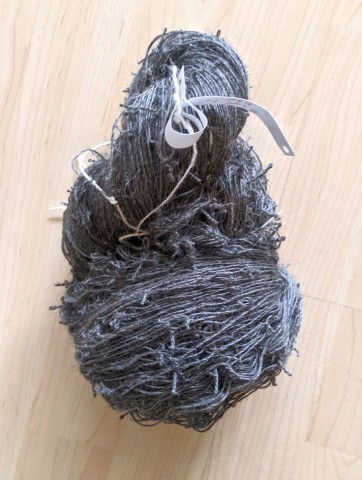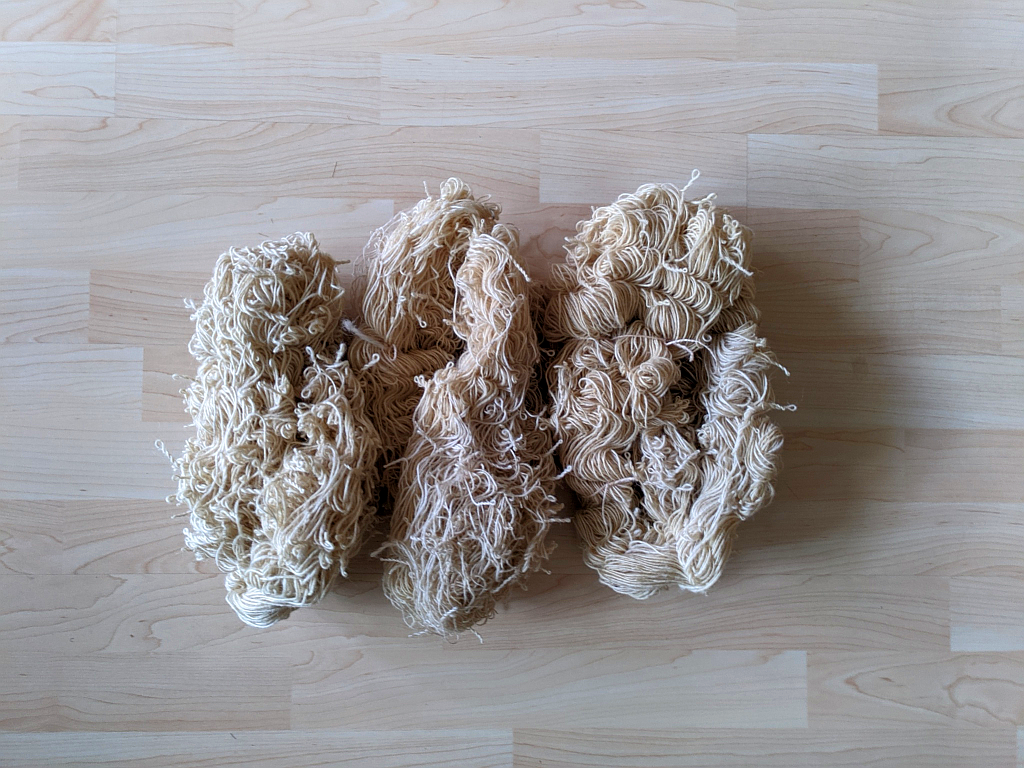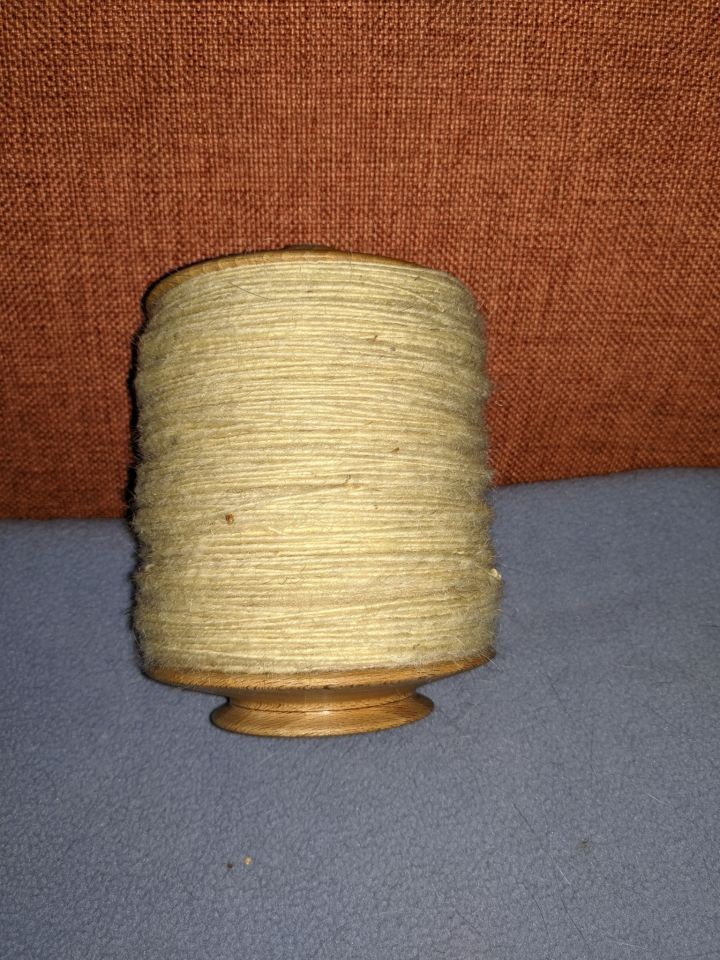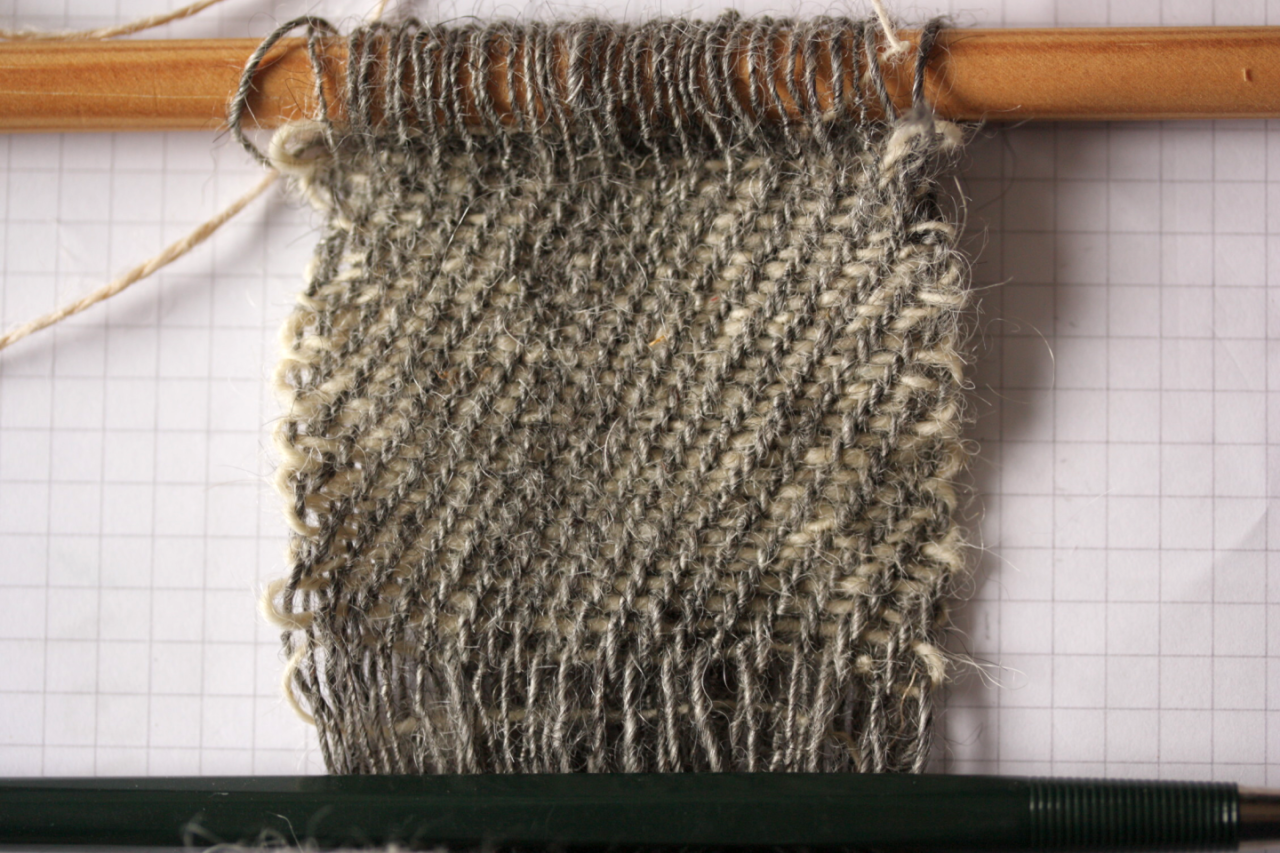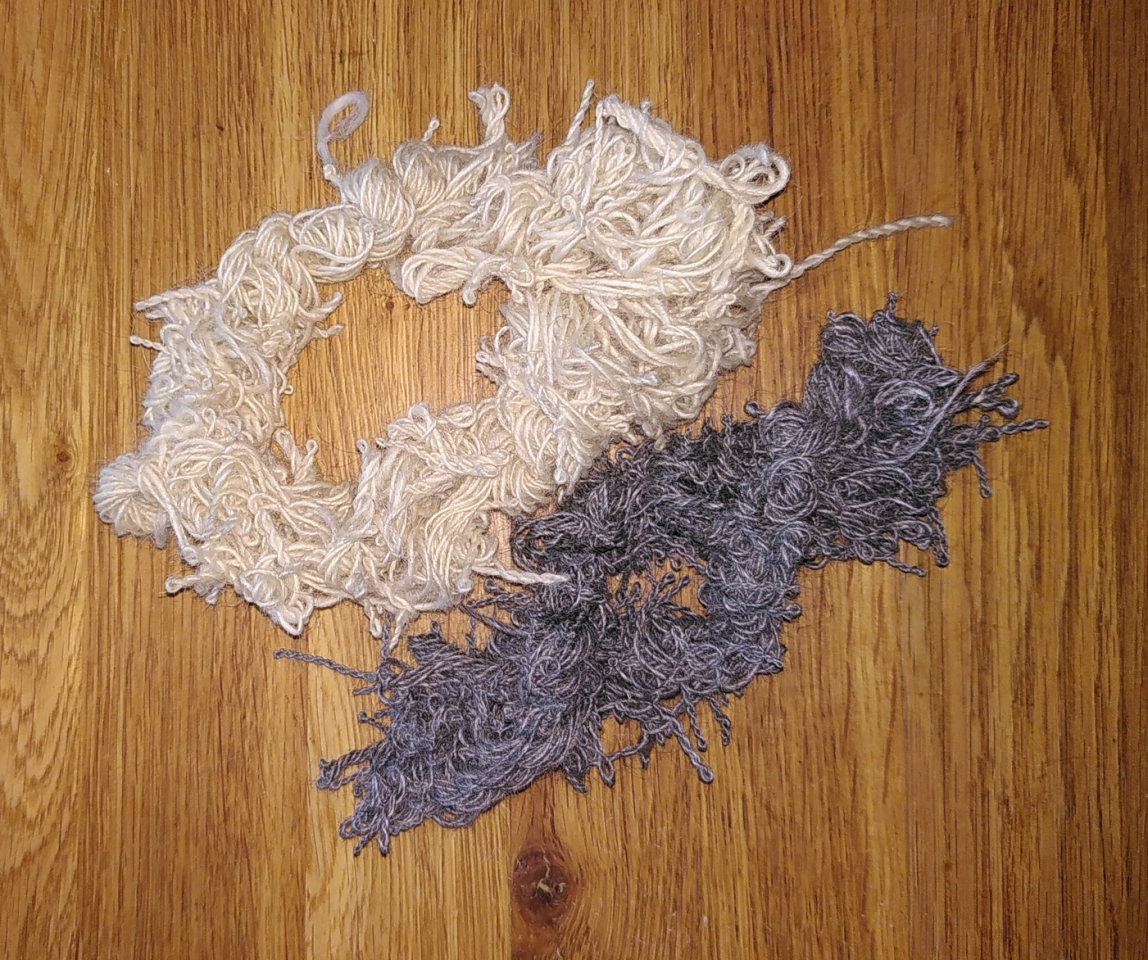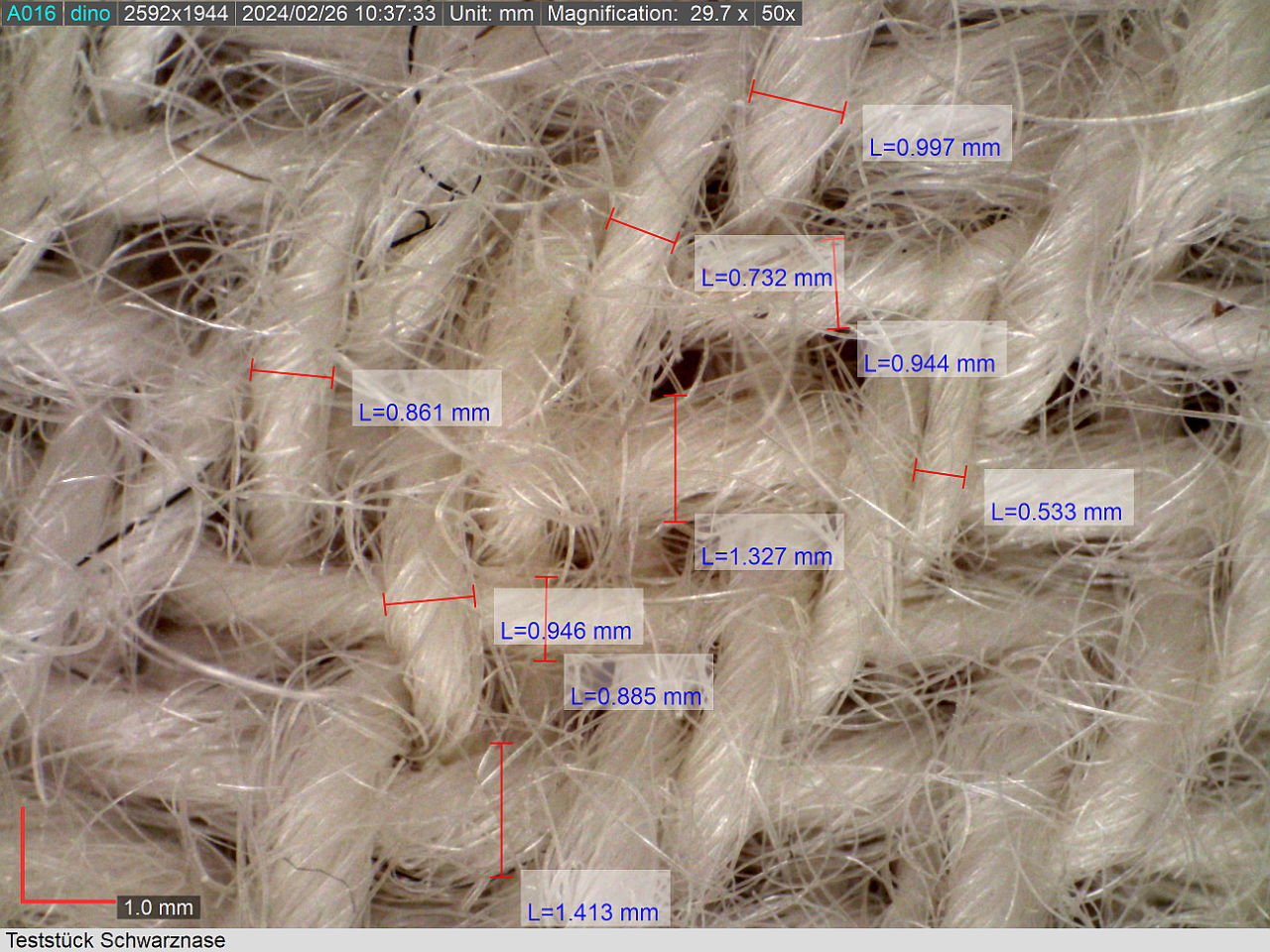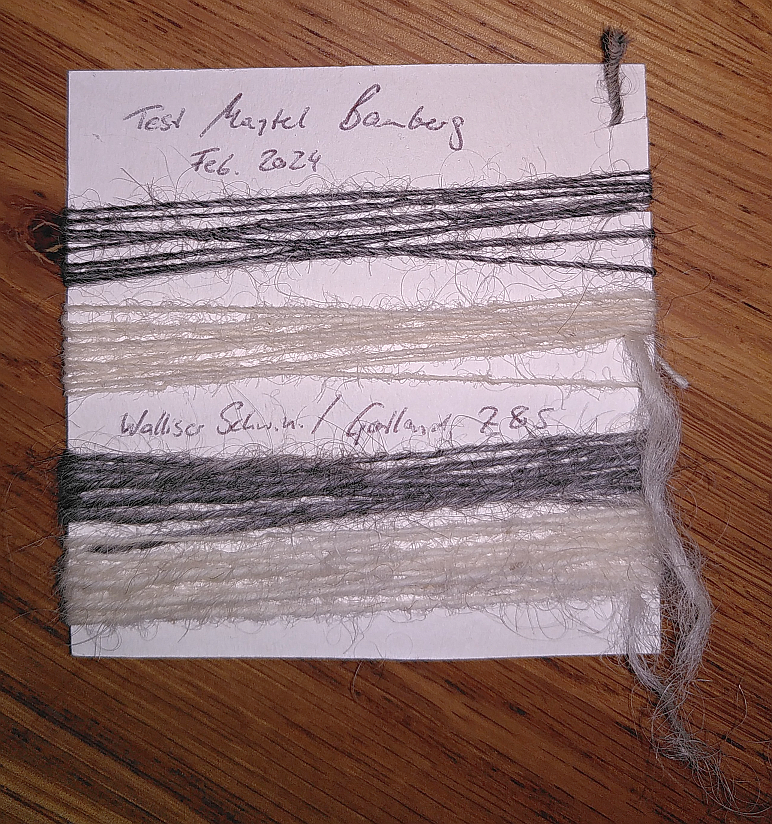Well, or at least warp time - I've started spinning for the warp for our textile reconstruction. The first bobbin has been spun, and reeled off, and it was quite a bit of yarn...
The original textile has very, very tightly twisted yarn in the warp, so I've been trying to spin to the same degree of twist without overtwisting it (so that it corkscrews in places). That is a challenge - but, well, I have a few more kilometers to go, and I'll surely get more relaxed about it soon.
But for now... the weekend is coming, and I'm very much looking forward to that!




